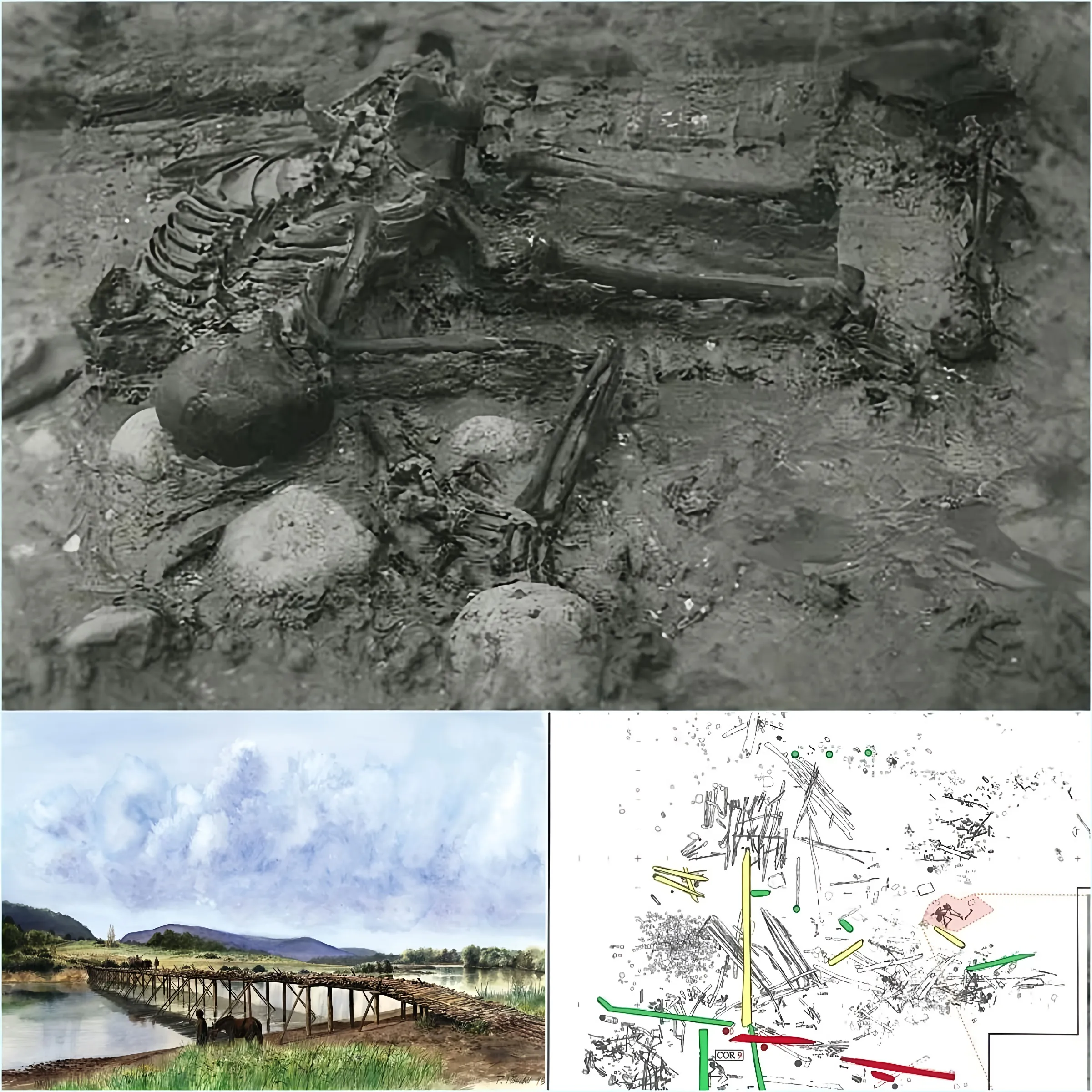Archaeologists have been investigating human remains found near the ruins of a bridge in the Three Lakes region of Switzerland, aiming to unravel the mysteries surrounding these ancient bones and enhance our understanding of the area’s Celtic heritage. In 1965, during renovations of the Thielle Canal, a collection of bones, skulls, and wooden beams was discovered on the riverbed near the Celtic bridge ruins at Cornaux/Les Sauges. The site yielded 20 skeletons, sparking decades of speculation and research.

A multidisciplinary team comprising specialists in archaeology, anthropology, thanatology, biochemistry, and genetics has recently revisited this intriguing discovery. Their research, funded by the Swiss National Science Foundation and the Autonomous Province of Bolzano, has been published in Scientific Reports.
This study is part of an international project led by the University of Bern and the Eurac Research Institute for Mummy Studies in Bolzano, focusing on improving our understanding of the Celts in Switzerland and Northern Italy. The Celtic culture, primarily oral in nature, left limited written records, with much information derived from accounts by Julius Caesar, who viewed them through a lens of military confrontation. “These are accounts of a military adversary, hence not necessarily objective or comprehensive,” explains Zita Laffranchi, a postdoctoral fellow at the University of Bern’s Institute of Forensic Medicine. By delving into archaeological finds, researchers aim to shed light on individuals and narratives absent from historical texts.





